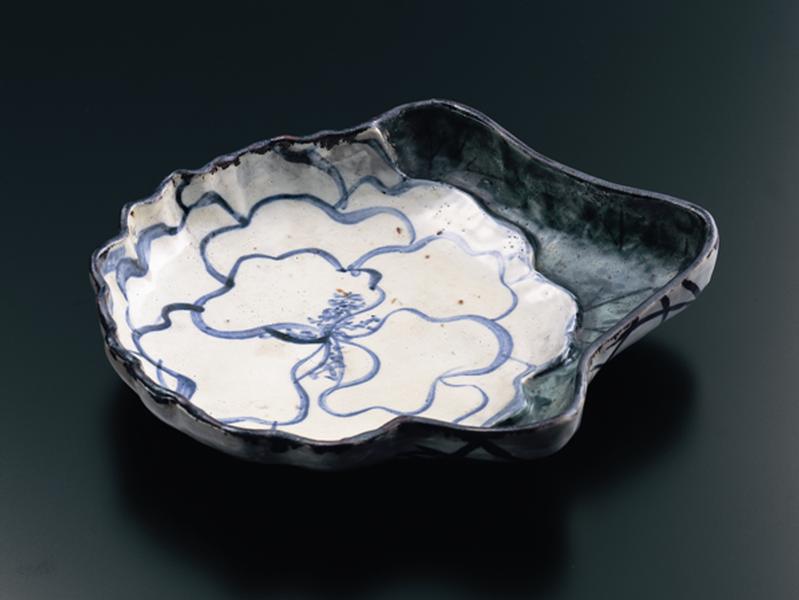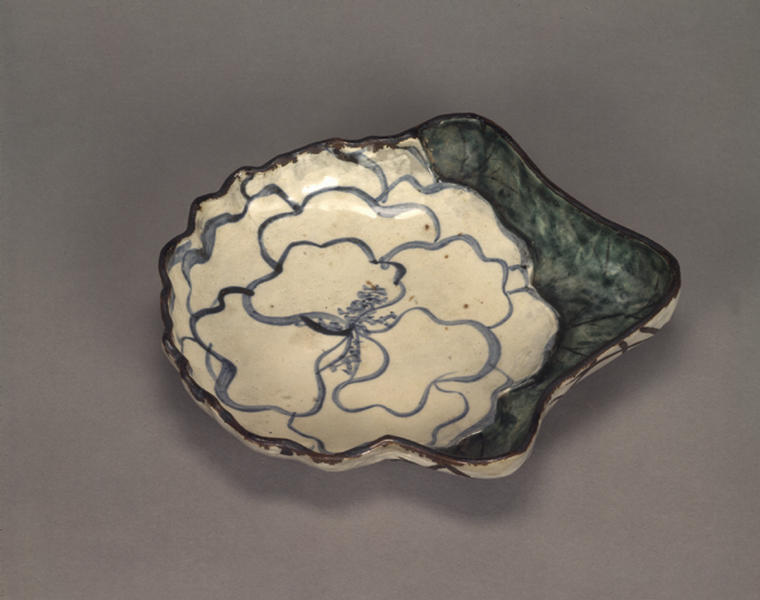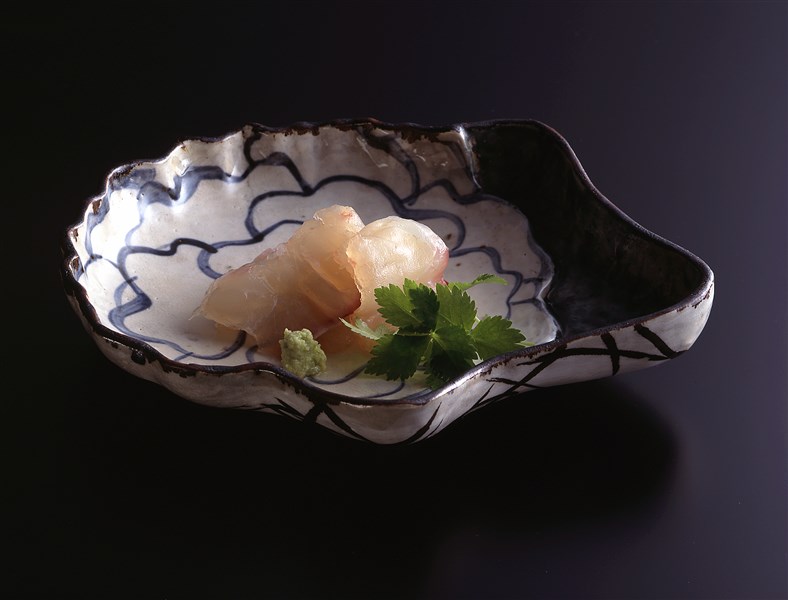Mukozuke Dish with Hollyhock Design
- 18th century
Mukozuke Dish with Hollyhock Design
Mukozuke Dish with Hollyhock Design
This dish is formed of one large hollyhock and part of its leaf, its rim forming the shape of the dish. Only one piece is now extant, but it was probably one of a set of ten; no similar examples survive.
After this dish was mold formed, white slip was applied as the ground in the area that the hollyhock flower would fill. The petals are outlined in underglaze cobalt. White slip has also been applied to part of the underside and a pale silver grass motif painted in underglaze iron and cobalt. A transparent glaze was applied and the dish was glaze fired. Then dark green overglaze enamel was applied to the leaf portion. Five button-like feet have been attached to the unglazed underside, where the fine white clay ground is visible. In the center, the Kenzan signature is written in underglaze iron.
Potshards quite similar to parts of this mukozuke have been found in the Narutaki kiln site artifacts. Shards with the Kenzan signature resembling this one also exist. Thus, this piece is highly likely to be an example of mold forming from the Narutaki kiln period, prior to the Nijo Chojiyamachi period. Research by Professor Kidashi Masaaki of Ritsumeikan University and researcher Jung Eunjin and others has confirmed that it corresponds to shards found at the Narutaki kiln site; it can without a doubt be regarded as a product of the Narutaki Kenzan kiln. The perimeter around the hollyhock in the bottom of the dish is somewhat higher and the leaf area somewhat sunken, a shape suggesting that its intended use was for serving food.


